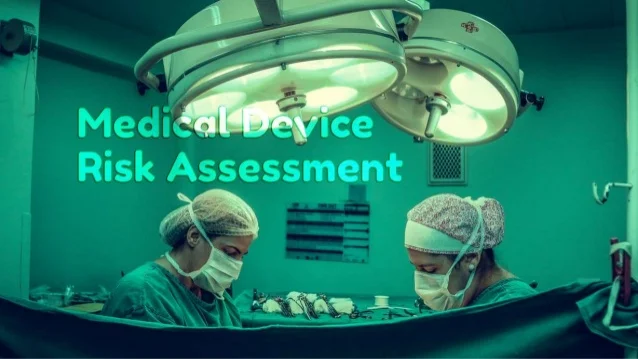Microbial Aerosolization Risk Assessment of Medical Devices
Aug 6, 2024
Author: Sean McLeod, Jamie Balarashti
Aerosol Research and Engineering Labs Inc., Overland Park, Kansas – 66213
Introduction
In the medical device industry, ensuring patient safety and maintaining regulatory compliance are imperative. One component of this is to ensure that certain medical devices do not harbor and aerosolize any pathogens which can infect the patient, especially for equipment used in a surgical suite. A recent risk assessment study of a cardiopulmonary bypass machines illustrates how rigorous aerosolization assessment testing can help save lives by mitigating any potential bioaerosol generation during an operation.
Importance of Aerosolization Risk Assessment Testing
Mycobacterium chimaera is a potentially harmful microorganism, to especially for those undergoing open-heart surgery. It can be aerosolized from medical devices having a water reservoir. During surgery, the aerosolized organism can deposit inside a patient's chest cavity, where it slowly incubates over time and eventually causes a life-threatening infection. Our state-of-the-art testing protocols and laboratories are designed to assess if such devices release harmful bioaerosols. The goal of the risk assessment testing is to guarantee the safety profile of the medical device and protect patients and healthcare providers from potential infections.
Testing Methodology
The study overview is to assess the cardiopulmonary bypass machine when operated in it normal cycle, which is typically 6 hours. The cardio pulmonary machine was spiked with 1 x 106 cfu in it reservoir tank and operated normally. A special test enclose was constructed to take continuous sampling of the unit via viable cascade impactors and assess the total cfu emitted during the cycle operation. The key was that the sampling system had to have limits of detection better than 0.005 cfu/ liter of air with continuous sampling. The medical device risk assessment study involved:
Test System Preparation: Prior to testing the device and test system were disinfected with hydrogen peroxide and cleaned.
Simulation of Actual Use: The medical devices were run for six hours and were programmed to mimic a typical surgical operation with a thermal load representing a patient.
Simulation of Reservoir Contamination: The water reservoirs were spiked with a minimum 1 x 106 colony forming units per milliliter (CFU/mL) of Mycobacterium chimaera to simulate water contaminant.
Continuous Bioaerosol Sampling: Air samples were taken with a series of Viable cascade impactors in a sealed environment to detect and enumerate any bacterial contamination aerosolized by the medical device tested .
Comprehensive Data Analysis: After allowing a minimum 21 days incubation time for samples to grow the bacterial colonies were counted and the concentrations emitted by the cardiopulmonary bypass machine was calculated.
Mycobacterium chimera on Blood Agar Petri Dish
FDA Acceptance Criteria
Testing protocols developed set specific success criteria in order to validate the testing methodologies as well as the medical device being evaluated. In order to be deemed safe total bioaerosol collected had to be ≤0.01 CFU/L of air. The other success criteria of the study included:
Negative Controls: Ensured the testing environment was contaminant-free before device operation began.
Positive Controls: The testing system's sensitivity and accuracy in detecting the Mycobacterium at various concentrations was confirmed.
Minimum Bacterial Concentration: In order to simulate a contamination a minimum of 1 x 106 colony forming units per milliliter (cfu/mL) had to be achieved for a test to be valid.
Validation Testing: Assessed microbes' survivability, the test system collection efficiency and sensitivity to ensure consistent and reliable results.
Results
Our findings showed that the original device initially failed to meet the acceptance criteria, as it aerosolized Mycobacterium chimaera beyond the FDA's acceptable levels. Following this, additional research and development testing was conducted to identify the point of failure within the unit. Once the failure point was determined, a corrective design change was implemented, and the unit was retested.
After implementing the new design, the cardiopulmonary bypass machine demonstrated near-zero aerosolization of Mycobacterium chimaera, well below the stringent FDA safety thresholds. This study highlights that risk assessment testing is crucial for the successful implementation of new medical devices. Although engineers aim to design safe units, rigorous testing is essential to confirm their safety. In this case, correcting the design flaw resulted in saving many lives.
Benefits of Partnering with Us
Aerosol Risk Assessment Expertise: Our testing services ensure that your devices comply with the latest FDA standards and international safety regulations.
Demonstrating Safety: Independent laboratory testing can confirm the safety of the unit or identify deficiencies that need correction, ultimately saving lives.
Brand Confidence: Showing a commitment to safety enhances your reputation and builds trust with healthcare providers and patients.
Liability Protection: Ensuring safety and compliance helps prevent costly liability suits.
Innovative Solutions: We provide insights that drive product improvements and innovation, keeping your devices at the forefront of the healthcare industry.
Customized Testing for Various Devices
Whether you're developing new medical equipment or looking to ensure the safety of your existing products, our tailored risk assessment testing programs are designed to meet your and regulatory needs. Our experienced scientists and state-of-the-art facilities are equipped to handle various medical devices and testing scenarios.




